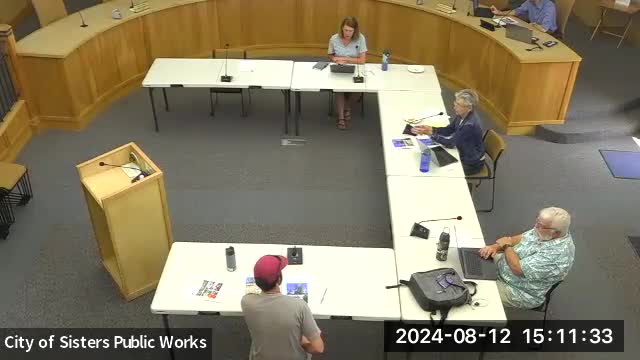Tree Replacement Debate Sparks Controversy in Local Council Meeting
August 12, 2024 | Sisters, Deschutes County, Oregon

This article was created by AI summarizing key points discussed. AI makes mistakes, so for full details and context, please refer to the video of the full meeting. Please report any errors so we can fix them. Report an error »

During a recent government meeting, council members discussed the removal and replacement of trees in a residential area, emphasizing the importance of maintaining the urban canopy. The conversation was sparked by a homeowner's request to remove a tree that was reportedly obstructing their view and potentially causing damage to their property.
Councilor comments highlighted the necessity of replacing any tree removed from the right-of-way to preserve the community's greenery. One councilor noted that while the homeowner expressed concern over the tree's proximity to their house, the committee should consider the long-term implications of tree removal on the neighborhood's landscape.
The discussion also touched on the condition of existing trees in the area, with several members observing that many appeared unhealthy, possibly due to inadequate irrigation. The council acknowledged the role of homeowners' associations in maintaining these trees and the need for better irrigation solutions to support their growth.
As the meeting progressed, members debated the best course of action, considering whether to defer the decision until further consultation with the homeowner could be conducted. The council recognized the potential for setting a precedent that could affect other properties in the neighborhood, prompting a careful approach to the issue.
Ultimately, the council agreed to table the discussion, allowing for further investigation into the situation and potential replanting efforts. This decision underscores the ongoing commitment to urban forestry and the challenges faced in balancing individual property concerns with community environmental goals.
Councilor comments highlighted the necessity of replacing any tree removed from the right-of-way to preserve the community's greenery. One councilor noted that while the homeowner expressed concern over the tree's proximity to their house, the committee should consider the long-term implications of tree removal on the neighborhood's landscape.
The discussion also touched on the condition of existing trees in the area, with several members observing that many appeared unhealthy, possibly due to inadequate irrigation. The council acknowledged the role of homeowners' associations in maintaining these trees and the need for better irrigation solutions to support their growth.
As the meeting progressed, members debated the best course of action, considering whether to defer the decision until further consultation with the homeowner could be conducted. The council recognized the potential for setting a precedent that could affect other properties in the neighborhood, prompting a careful approach to the issue.
Ultimately, the council agreed to table the discussion, allowing for further investigation into the situation and potential replanting efforts. This decision underscores the ongoing commitment to urban forestry and the challenges faced in balancing individual property concerns with community environmental goals.
View full meeting
This article is based on a recent meeting—watch the full video and explore the complete transcript for deeper insights into the discussion.
View full meeting
